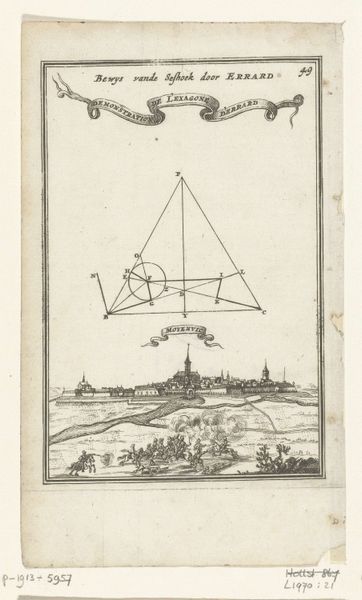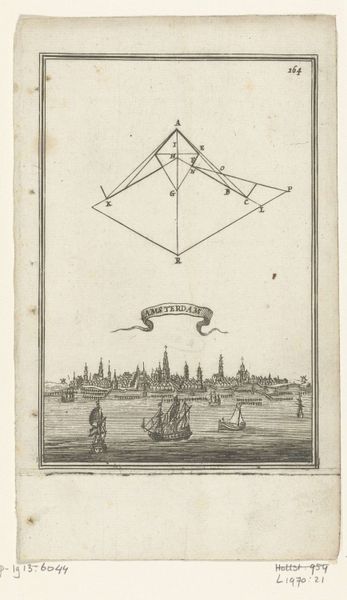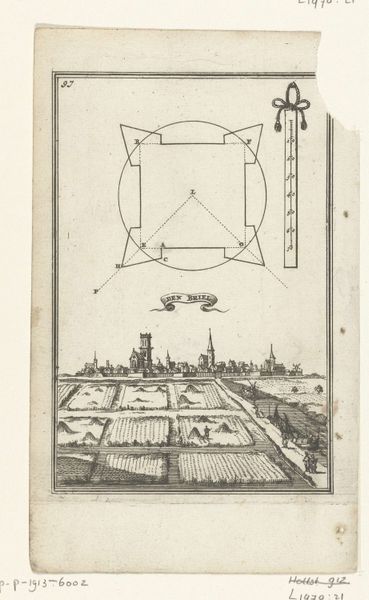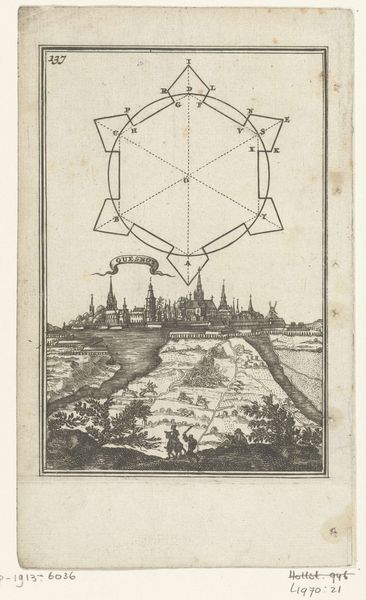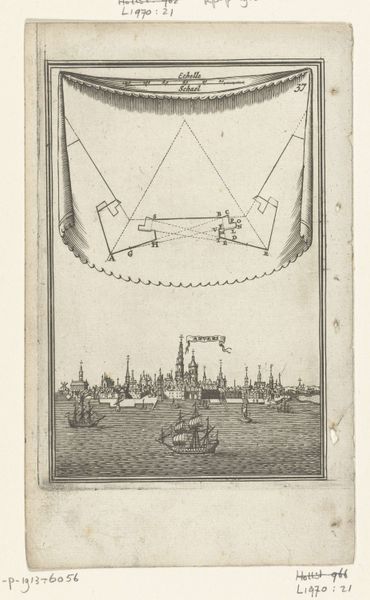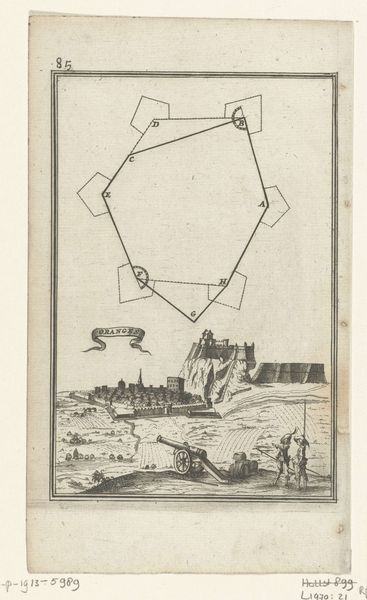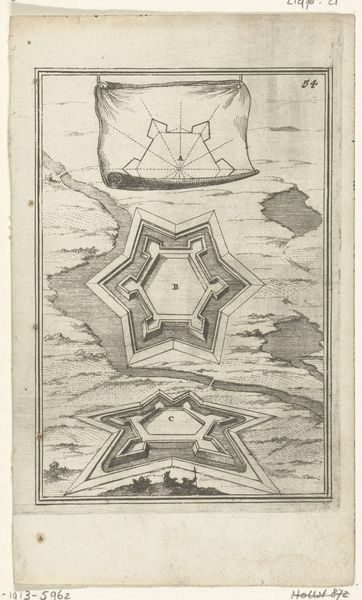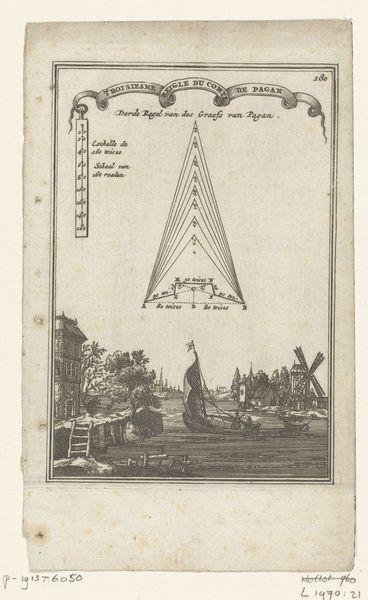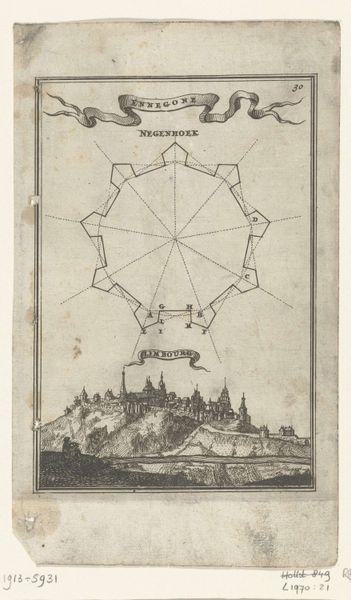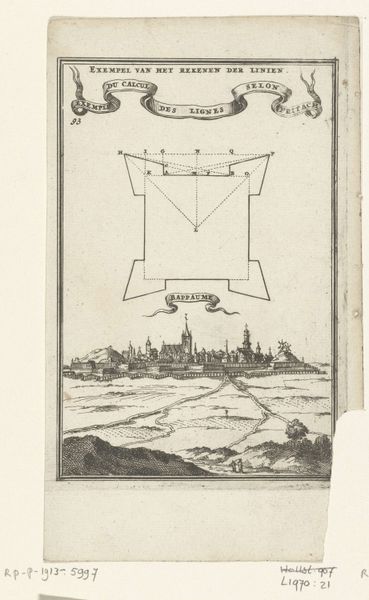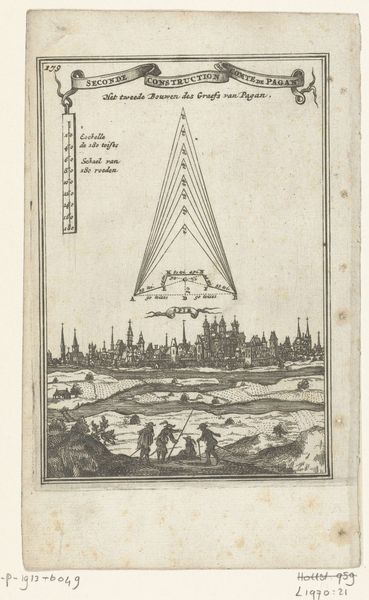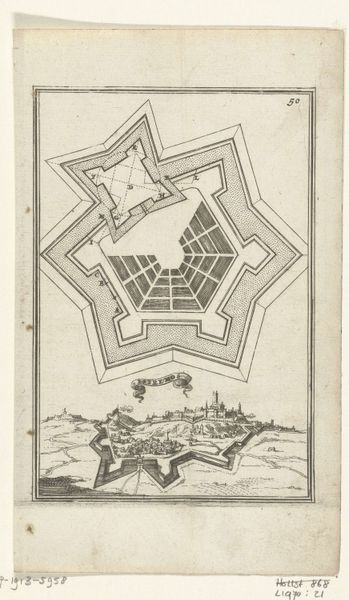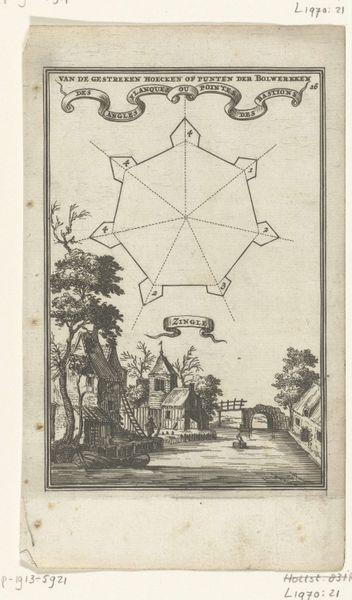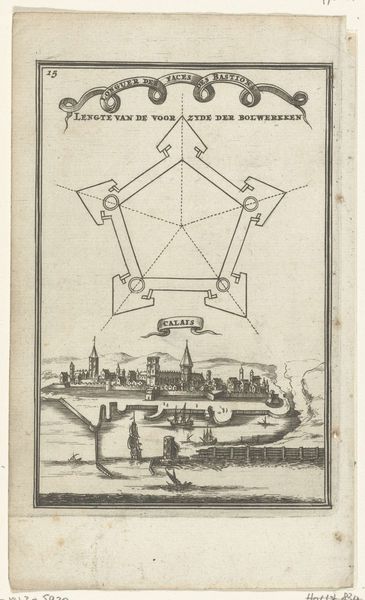
Illustratie voor 'Den Arbeid van Mars' van Allain Manesson Mallet 1672
0:00
0:00
print, engraving
#
aged paper
#
toned paper
#
light pencil work
#
baroque
# print
#
old engraving style
#
sketch book
#
personal sketchbook
#
geometric
#
line
#
sketchbook drawing
#
cityscape
#
sketchbook art
#
engraving
Dimensions: height 185 mm, width 112 mm
Copyright: Rijks Museum: Open Domain
Curator: Here we have Romeyn de Hooghe's "Illustratie voor 'Den Arbeid van Mars' van Allain Manesson Mallet," created in 1672. It's an engraving, and what immediately strikes me is the juxtaposition of the abstract geometric diagram above the surprisingly delicate cityscape below. Editor: Absolutely. The line work in that cityscape is exquisite; it feels incredibly detailed, almost… optimistic. But the diagram looming above, all sharp angles, throws a strange, calculating shadow over the whole thing. Makes you wonder what "labor of Mars" they were envisioning. Curator: It's part of a larger book of military architecture, so those geometrical forms were essential for fortification planning and siege warfare. The diagram illustrates a method for calculating distances or angles. This type of drawing was extremely important. Editor: So the "making" of war... laying out precise angles to maximize impact. It takes something brutish and makes it precise, quantifiable. It feels… cold, you know? Like all that destruction comes down to material planning and the mathematics behind it. Curator: Yes, precisely. De Hooghe masterfully contrasts the raw potential for destruction with an image of a prosperous, functioning town – the very thing at risk. There’s something tragic in that dichotomy, isn't there? A sort of vulnerability laid bare. Editor: And the book itself— its material form becoming another type of weaponry. Knowledge disseminated widely so others can replicate violence from afar, further distancing it from human feeling. It's unsettling how beautifully rendered the tools of control are. Curator: He was incredibly skilled. You can really feel the artist grappling with these contrasting perspectives. I almost see a conflict in De Hooghe himself – admiration for technical mastery clashing with the weight of its potential impact. Editor: Makes me think about the labor involved. De Hooghe painstakingly etching this image, a process deeply rooted in craft. How many of these engravings would he have needed to make to create books for wide release, the sweat equity embedded into each piece contributing to that violence from a distance? Curator: The materiality is fascinating isn't it? A flat, accessible image concealing all the complexities that it took to produce the design and then print for circulation… so that we all might have a chance at imagining or creating our own war scenarios. Editor: So, in the end, even the observer becomes implicated in the creation and potential reenactment of harm? I hadn't considered it from this angle before. Thanks, that gives me chills! Curator: Art does that, right? Offers a gateway into new realms of consideration? Let's hope they remain considerations.
Comments
No comments
Be the first to comment and join the conversation on the ultimate creative platform.
